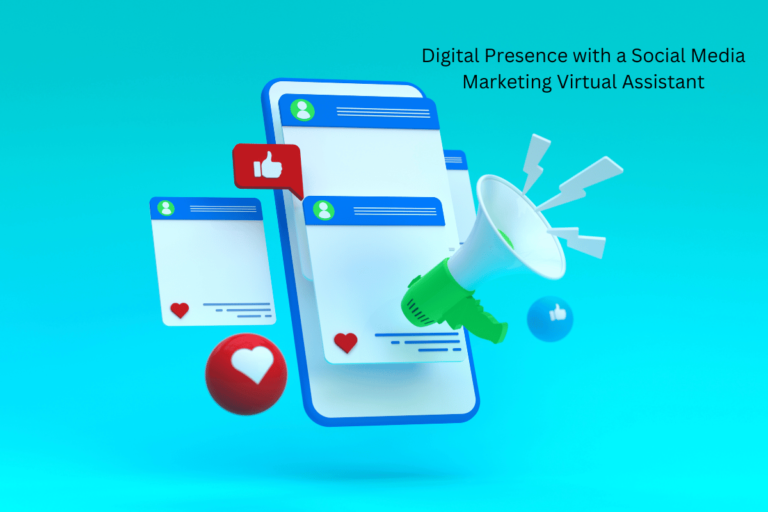10 Social Media Marketing Trends for Late 2024 and Early 2025
As we approach the end of 2024 and look forward to 2025, social media marketing continues to be one of the most dynamic and rapidly evolving areas of digital marketing. The landscape of social media is shaped by technological advancements, changing consumer behaviors, and shifting cultural trends, all of which create new opportunities and challenges for brands. Staying ahead of these trends is crucial for businesses looking to maintain a strong presence and engage effectively with their audience.
In this article, we’ll explore the key social media marketing trends that are set to define late 2024 and early 2025, and how brands can leverage them to stay competitive.
1. Rise of AI-Driven Content Creation and Curation
Artificial Intelligence (AI) is increasingly influencing social media marketing, with AI-driven tools transforming how content is created, curated, and distributed. In late 2024 and early 2025, we’re seeing a surge in the use of AI for content generation, where advanced algorithms can create everything from social media posts to videos and graphics.
AI tools can analyze vast amounts of data to understand what type of content resonates with specific audiences. They can then generate content that is optimized for engagement, whether it’s text, images, or even video snippets. This not only saves time but also allows marketers to scale their content production without sacrificing quality.
Moreover, AI-driven content curation is helping brands deliver personalized content to users. By analyzing user behavior, AI can recommend or prioritize content that aligns with a user’s interests, making social media feeds more relevant and engaging.
2. Short-Form Video Dominance
Short-form video content continues to dominate the social media landscape, and this trend is expected to grow even stronger in late 2024 and early 2025. Platforms like TikTok, Instagram Reels, and YouTube Shorts have popularized bite-sized videos, leading to a shift in how brands approach content creation.
Consumers have shown a strong preference for short, engaging videos that can be consumed quickly. These videos are often more dynamic and entertaining, making them ideal for capturing attention in a crowded social media space. Brands are increasingly using short-form videos for product demonstrations, behind-the-scenes content, tutorials, and user-generated content (UGC).
Additionally, the algorithmic nature of platforms like TikTok means that well-crafted short-form videos can quickly go viral, reaching a large audience with minimal investment. As this trend continues, brands will need to focus on creating high-impact, visually appealing short-form content that aligns with their marketing goals.
3. Social Commerce Expansion
Social commerce—shopping directly through social media platforms—has been growing steadily, and it’s poised to become even more significant in late 2024 and early 2025. Platforms like Instagram, Facebook, and TikTok have integrated shopping features that allow users to browse and purchase products without leaving the app.
This seamless shopping experience is particularly appealing to younger consumers, who are more likely to discover and purchase products through social media. Brands are increasingly using shoppable posts, live-stream shopping events, and in-app checkout features to drive sales directly from their social media profiles.
To capitalize on this trend, businesses should focus on creating a visually compelling and cohesive social shopping experience. This includes optimizing product images, using engaging video content, and leveraging influencer partnerships to showcase products in a more authentic and relatable way.
4. Rise of Niche Social Platforms
While major platforms like Facebook, Instagram, and Twitter continue to dominate, there’s a growing trend towards niche social platforms that cater to specific interests or communities. These platforms offer more targeted advertising opportunities and foster deeper engagement with users who share common passions or hobbies.
Examples of niche platforms gaining traction include:
- Clubhouse and Twitter Spaces: Audio-based platforms focused on real-time discussions and community building.
- BeReal: A social platform that encourages authenticity by allowing users to share unfiltered moments of their lives.
- Pinterest: Continuing to grow as a visual discovery engine, particularly for brands in fashion, home decor, and DIY.
Brands that align with the interests and values of these communities can use niche platforms to build stronger, more loyal followings. By understanding where their target audience spends time and tailoring content accordingly, businesses can achieve more meaningful engagement.
5. Increased Focus on Social Responsibility and Ethical Marketing
Consumers are increasingly holding brands accountable for their social and environmental impact. In late 2024 and early 2025, social responsibility and ethical marketing will continue to be critical in shaping brand reputation and consumer loyalty.
Brands are expected to take clear stands on social issues, demonstrate their commitment to sustainability, and act transparently. This can include everything from supporting charitable causes to reducing environmental impact in their operations.
Social media is the ideal platform for brands to communicate these values, as it allows for real-time engagement and direct interaction with consumers. Companies that authentically incorporate social responsibility into their marketing strategies can build stronger connections with socially conscious consumers, particularly younger generations.
6. Immersive Experiences with AR and VR
Augmented Reality (AR) and Virtual Reality (VR) are becoming more integral to social media marketing, offering immersive experiences that go beyond traditional content. These technologies allow users to interact with brands in entirely new ways, from trying on virtual clothing to exploring 3D product models.
In late 2024 and early 2025, we’ll see more brands integrating AR and VR into their social media strategies. For example, beauty brands might use AR to let users virtually try on makeup products through Instagram or Snapchat filters. Meanwhile, retail brands might create VR showrooms where users can explore products in a virtual environment.
These immersive experiences not only capture attention but also help reduce the gap between online and in-store shopping, making them particularly valuable for e-commerce brands.
7. Influencer Marketing Evolution
Influencer marketing remains a powerful tool in the social media landscape, but the approach is evolving. In 2024 and 2025, the focus is shifting from mega-influencers with massive followings to micro-influencers and nano-influencers who have smaller, more engaged audiences.
These smaller influencers often have higher engagement rates and can build more authentic relationships with their followers. Brands are leveraging these influencers to create content that feels more genuine and relatable, rather than highly polished and promotional.
Moreover, there’s a growing trend towards long-term partnerships with influencers, as opposed to one-off collaborations. These ongoing relationships allow brands to build deeper connections with both the influencer and their audience, resulting in more consistent and impactful marketing campaigns.
8. User-Generated Content (UGC) as a Trust Builder
User-generated content (UGC) continues to be a cornerstone of effective social media marketing. UGC is seen as more authentic and trustworthy compared to brand-generated content, making it a powerful tool for building credibility and trust.
In 2024 and 2025, brands are increasingly encouraging their customers to share their experiences on social media, whether it’s through reviews, photos, or videos. By showcasing UGC on their profiles, brands can create a sense of community and demonstrate that real people are enjoying their products or services.
To maximize the impact of UGC, brands can use hashtags, contests, and challenges to encourage participation. Highlighting customer stories and testimonials also adds a personal touch that resonates with potential customers.
9. The Growing Importance of Social Listening
Social listening involves monitoring social media channels for mentions of a brand, competitors, or relevant industry keywords. In late 2024 and early 2025, social listening is becoming increasingly important as brands strive to stay in tune with their audience’s needs and preferences.
By analyzing the conversations happening around their brand, companies can gain valuable insights into consumer sentiment, identify emerging trends, and respond to issues in real-time. Social listening also helps brands understand what content resonates with their audience, allowing them to refine their strategies accordingly.
Moreover, social listening can be used for competitive analysis, helping brands stay ahead by understanding what their competitors are doing and how they are being perceived by the market.
10. Emphasis on Analytics and Data-Driven Decisions
As social media marketing becomes more sophisticated, the emphasis on analytics and data-driven decision-making is growing. In 2024 and 2025, successful brands will be those that can effectively measure the impact of their social media efforts and use data to inform their strategies.
Advanced analytics tools now offer deeper insights into audience behavior, content performance, and campaign ROI. By leveraging these tools, marketers can track key metrics such as engagement rates, conversion rates, and customer acquisition costs.
Data-driven strategies allow brands to optimize their content, targeting, and advertising spend, ensuring they get the most out of their social media marketing efforts. As the competition on social platforms intensifies, the ability to make informed decisions based on real-time data will be a critical advantage.
Conclusion
The social media marketing landscape for late 2024 and early 2025 is shaped by rapid technological advancements, evolving consumer preferences, and a growing emphasis on authenticity and social responsibility. Brands that stay ahead of these trends will be better positioned to engage their audiences, build trust, and drive meaningful results.
As we move into 2025, it’s clear that social media will continue to play a pivotal role in how brands connect with consumers. By embracing these trends and continuously adapting their strategies, businesses can thrive in an increasingly competitive and dynamic digital environment.





